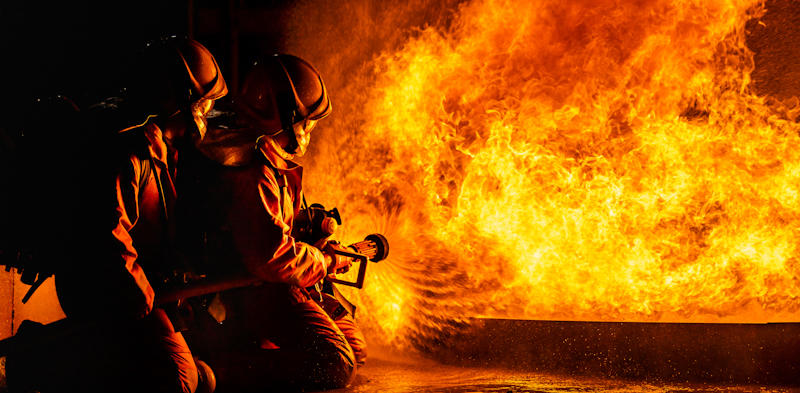Graphene adds new functionality to firefighting suits
Researchers from several Chinese institutions have found that breathable electrodes woven into fabric used in fire suits are stable at temperatures over 520˚C.

They aim to manufacture products on an industrial scale that are flame-retardant, but also intelligent enough to warn the firefighter of increased risks while facing flames.
The team of researchers from China’s Xi’an Polytechnic University, Tsinghua University, Chinese Academy of Sciences (CAS) and Shaanxi Textile Research Institute have developed Janus graphene/poly (p-phenylene benzobisoxazole), or PBO, woven fabric to make firefighting ‘smarter’.
'The fire scene often changes quickly, sometimes [meaning] firefighters are trapped in the fire [if they can’t] judge the risks in time,' says Professor Wei Fan. In short, firefighters also need to be rescued.
'Therefore, we would like to develop an intelligent fire suit and fire mask with the function of environment sensing and monitoring the physical characteristics of firefighters to better protect the lives and health of firefighters,' Fan says.
The fabric can detect breathing pace. 'Rapid breathing has shorter electrical intervals and stronger voltage signals than normal breathing. These findings suggest that the intelligent fire masks can monitor human health through respiratory signals,' according to Fan.
'The results [also] showed that the sensing performance of the piezoresistive sensor was maintained at 91.6%, 89% and 84% after 30, 60, and 90s of flame combustion, respectively.'
Compared to other published flame-retardant electronics, graphene/PBO fabrics are reported to maintain a better performance output at high temperatures.
The fabric also shows almost constant resistance value after 300 bending cycles and it can maintain a stable sensing signal at 500 compression cycles.
'These results demonstrate the repeatability and stability of this material in human motion monitoring,' asserts Fan.
However, the heat-humidity comfort of the material needs to be further explored.
Also, although the mask has a good smoke particle filtration effect, and the filtration efficiency of PM2.5 and PM3.0 reaches 95% and 100%, respectively, the filtration efficiency for smaller smoke particles (e.g. PM0.3 and PM1.0) needs to be further explored and improved.
Fan adds, 'Graphene is an excellent choice for preparing wearable electronic devices because of its supereminent electrical, thermal and mechanical [properties].
'In 2014, Tour et al. reported a simple, scalable, and economical process for the fabrication of 3D porous graphene by laser scribing on commercial polymers. This approach holds great promise for the preparation of graphene materials with controlled structures and selected patterns, due to the controllability of structures and properties as well as the adaptability to various raw materials.'
Recent studies also report that graphene can be fabricated by laser engraving on polybenzoxazine resin, poly(ether ketone), polysulfone, Teflon and Kevlar.
The team behind this work explains that PBO fibres possess high mechanical strength and better thermal stability than Kevlar fibres. 'Theoretically, PBO fabric can also be processed into Janus graphene/PBO fabrics by the laser direct writing technique to obtain smart wearable electronics with excellent mechanical properties and flame-resistance,' says Fan. It has been tested in a real-world scenario.







